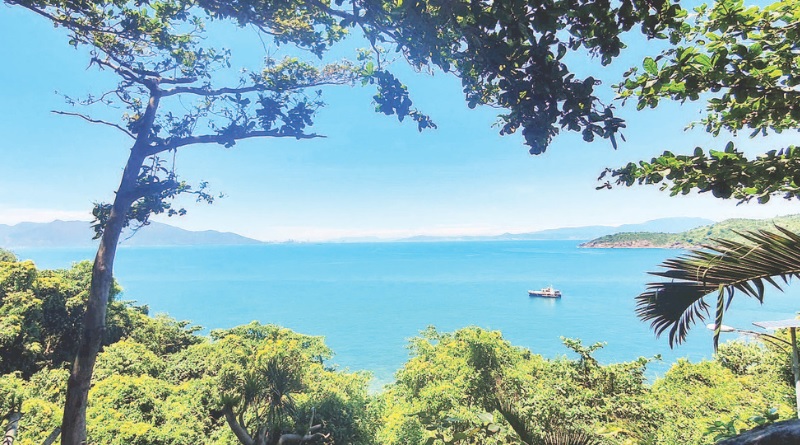Da Nang is blessed by nature with many stunning beaches and pristine islands, creating a majestic and poetic landscape.

The untouched beauty of Son Cha Island. (Photo: nhandan.vn)
Notably, after taking over Son Cha Island (at the foot of Hai Van Mountain) from Hue City, Da Nang has gained even greater opportunities to develop its sea and island routes into appealing destinations, especially those with economic conditions who are eager to explore and experience new horizons.
Untouched charm of Da Nang’s sea and islands
According to many long-standing travel and tour operators in Da Nang, Da Nang Bay, Son Tra Peninsula, and Hai Van Mountain are precious treasures that remain largely underexploited.
In recent years, Son Tra Peninsula has emerged as a unique tourism highlight, with ten beaches surrounding it, including Tien Sa, Da Den, Cat Vang, Mieu, Bac, Nom (Mother), Nom (Child), Rang, Xep and But beaches. Many of these remain remarkably untouched, making them ideal for eco-tourism development.
Da Nang Bay, with an average radius of 13 km and water depths ranging from 15 to 30 metres, is shielded by Hai Van and Son Tra mountains, forming a sheltered area perfect for marine activities, especially between March and September. Son Tra Peninsula holds a prime position for Da Nang across various aspects: national defence and security, culture-history, natural geography, environmental ecology, and marine economic and tourism development.
The beaches along Hai Van’s slopes - with Hai Van Pass’s forested mountains on one side and Da Nang Bay on the other - such as Sung Co, Xoan, Dua, and Chinh beaches (Van Village) further enhance the area’s poetic and majestic landscape. Significantly, in 2025, Da Nang officially received Son Cha Island (at the foot of Hai Van Mountain) from Hue City, adding diversity and uniqueness to Da Nang’s marine and island ecosystem.
Previously, Son Cha Island was part of the former Phu Loc District, Thua Thien Hue Province (now Hue City). Known as Hon Chao or Pearl Island, Son Cha is an untouched island below Hai Van Pass. From afar, it resembles an upturned pan, standing 235 metres above sea level and covering about 1.5 km².
Son Cha Island boasts a rich marine ecosystem, home to over 144 coral species, 135 seaweed species, and 162 colourful fish species, creating a shimmering and enchanting marine world. With its fine white sands and crystal-clear waters, the island offers an ideal condition for visitors to relax and immerse themselves in its natural beauty.
Tapping potential to develop high-end marine tourism
Reports show that while some tourism operators offer sightseeing and diving tours along the sea and island routes, their numbers remain limited. Dang Hoa, owner of Han Giang tourist boats, shared that tourist boats can sail along the western slopes of Da Nang Bay and Hai Van, offering visitors the chance to admire the magnificent and poetic landscapes of Hai Van,” Hoa said.
“Recently, Da Nang and Hue have proposed investing in developing Son Cha Island into an exclusive eco-resort targeting high-spending and ultra-luxury travellers. The island is set to become a world-class, secluded eco-tourism destination, appealing to billionaires willing to pay generously to experience the pristine nature of this scarcely visited island at the foot of Hai Van Mountain,” Hoa emphasised.
From another perspective, Nguyen Thanh Tam, General Director of Viet An Group Joint Stock Company, noted that the CT15 - Hon Sup - Bai Nam - Bai Da inland waterway route is currently attracting attention from several water transport companies bringing tourists to Son Tra Peninsula. Tam believes Da Nang should swiftly complete policies, provide support, and call for investment in water-based tourism products.
Specifically, the city should expand the CT15 - Hon Sup - Bai Nam - Bai Da route and has mechanisms to attract investment in destinations along it to enrich tourism products and meet customer demands and preferences. He also suggested the city should soon propose to the Ministry of National Defence to reopen the route to the bay, starting from the Han River to Hon Chao (Son Cha Island) and back.
According to the Da Nang Department of Culture, Sports and Tourism, to develop inland waterway tourism - a model that has succeeded in many countries and major cities worldwide - the city has issued a development plan for inland waterway tourism to 2030, with a vision to 2045. This includes building standard ports and terminals, adding high-speed boats, cruise ships, overnight vessels, and developing river- and sea-based services.
Recently, the Da Nang People’s Committee announced a plan to organise water-based entertainment activities along the coastal areas and the Han River, to be implemented from 2025 to 2030. This initiative aims to leverage the advantages of the sea and the Han River to diversify tourism products. Through these efforts, Da Nang hopes to attract both domestic and international tourists, meet the recreational needs of local residents, and make a positive contribution to the city’s economic development.
Vu Tan